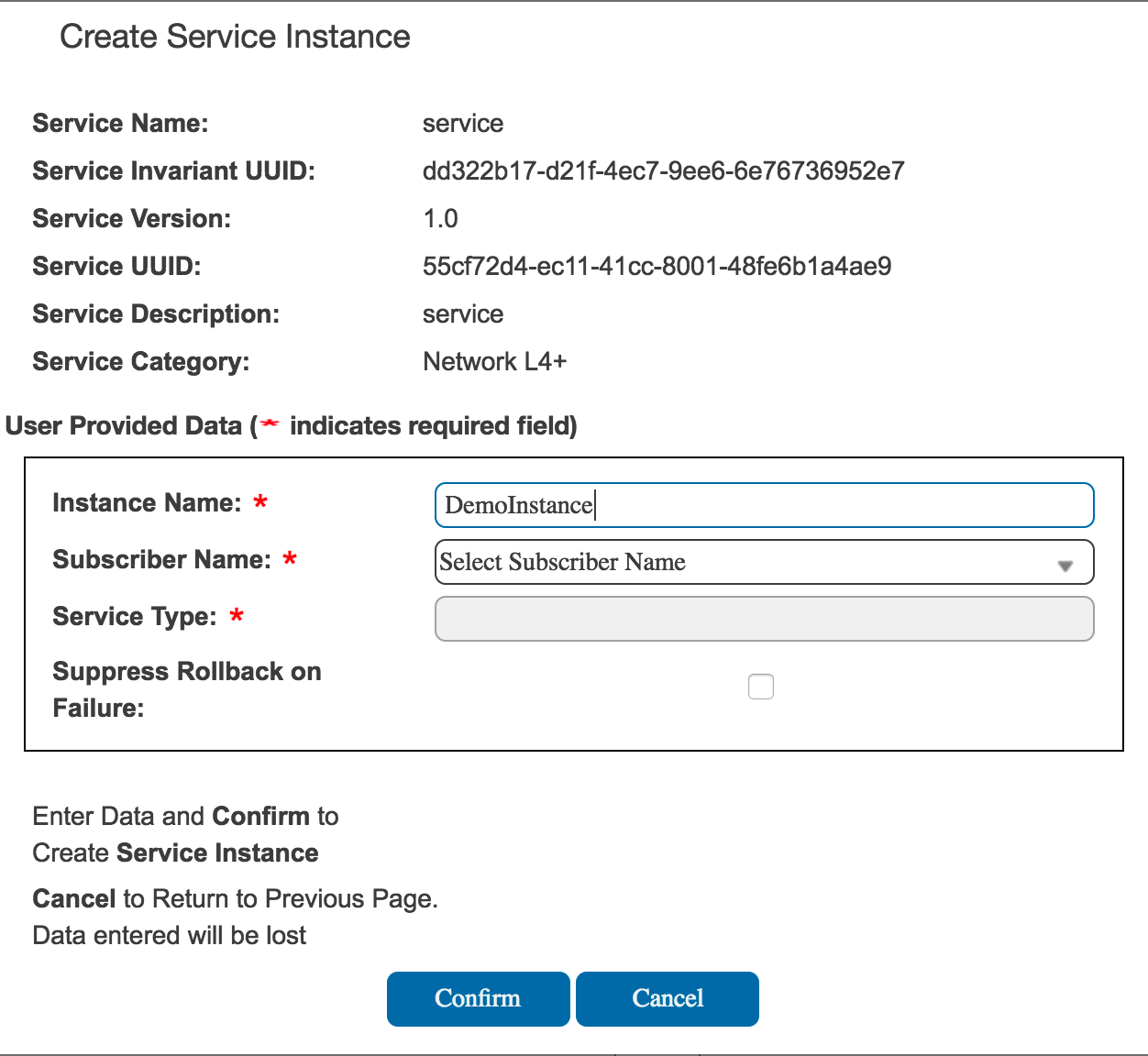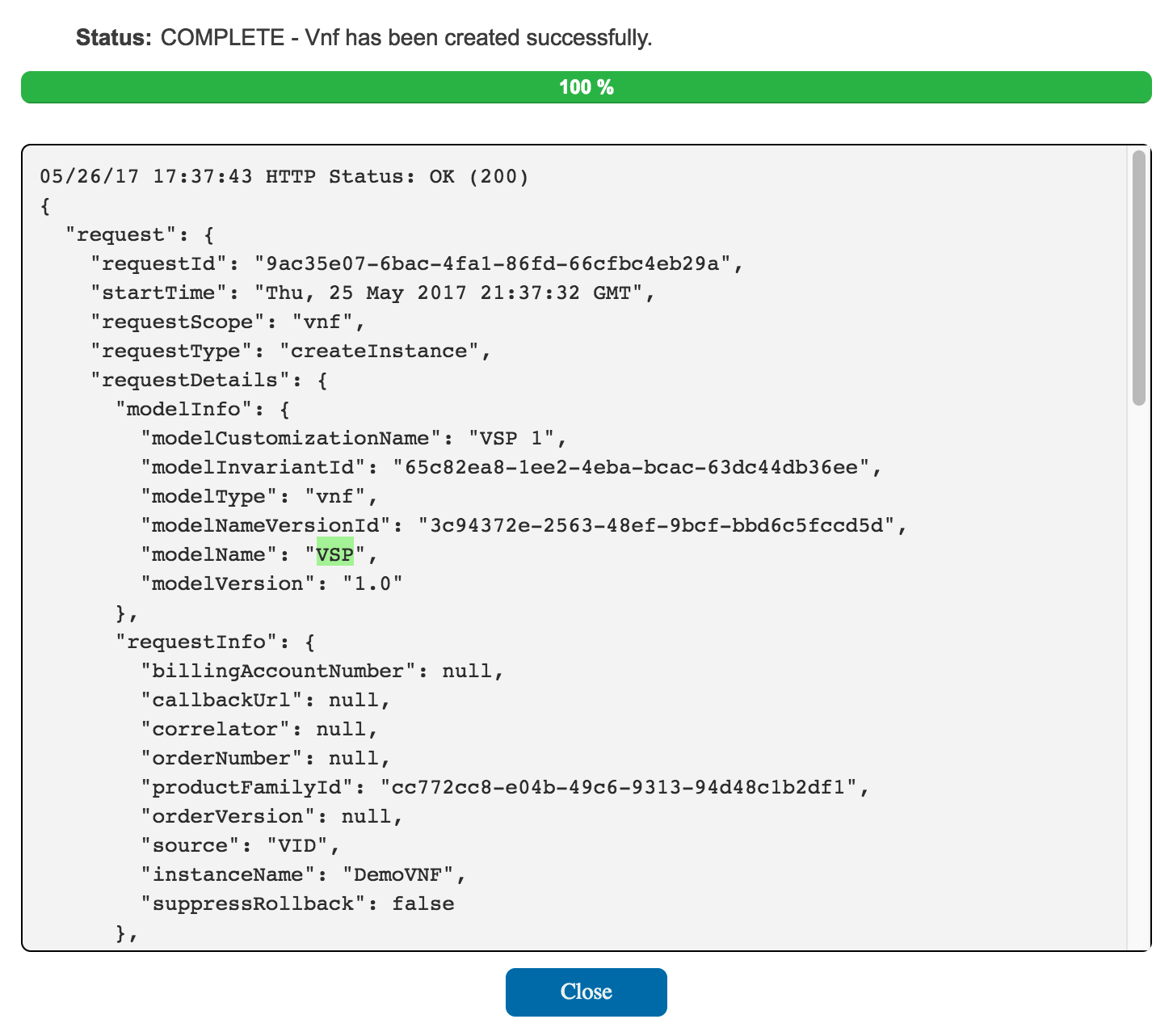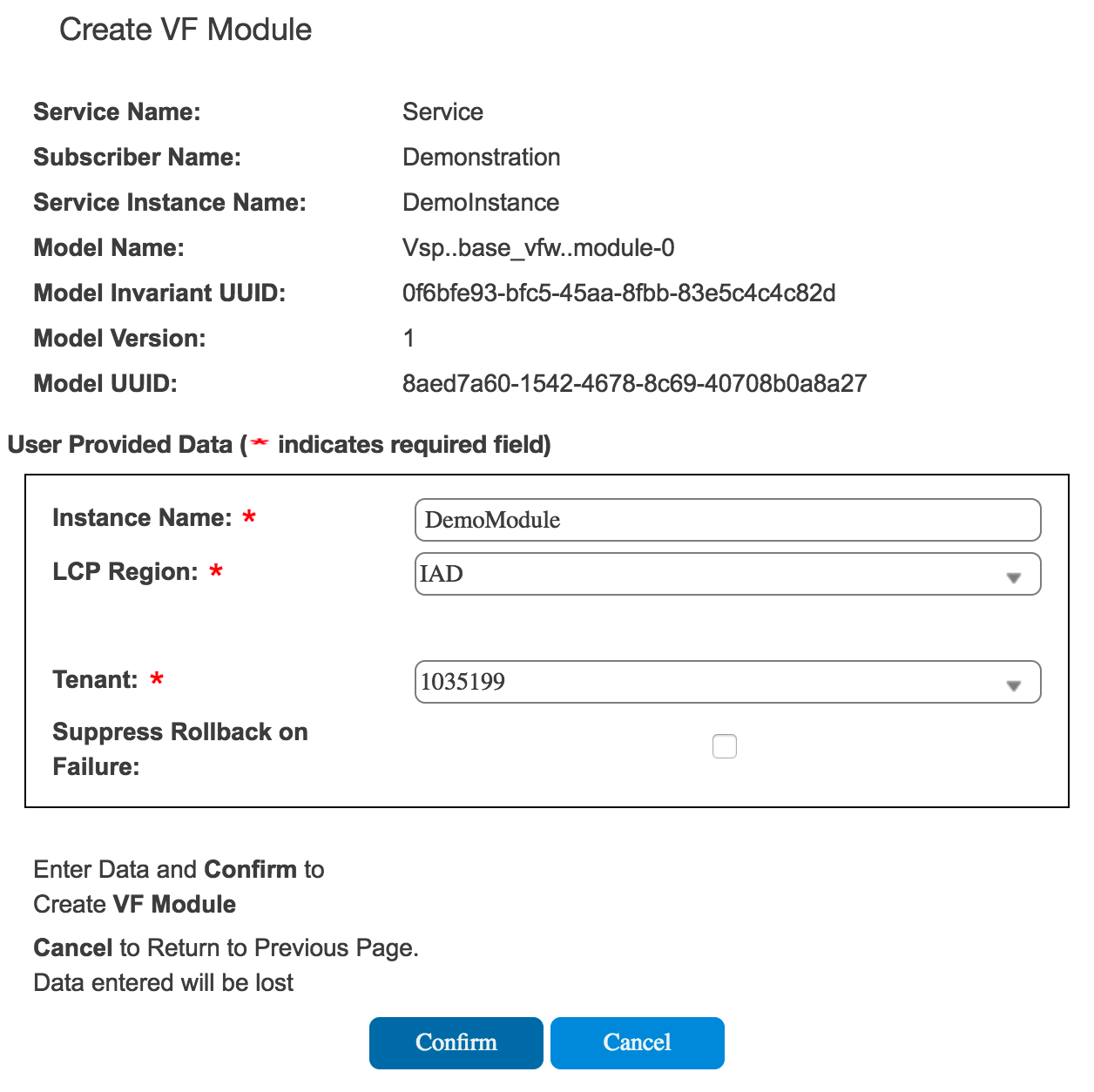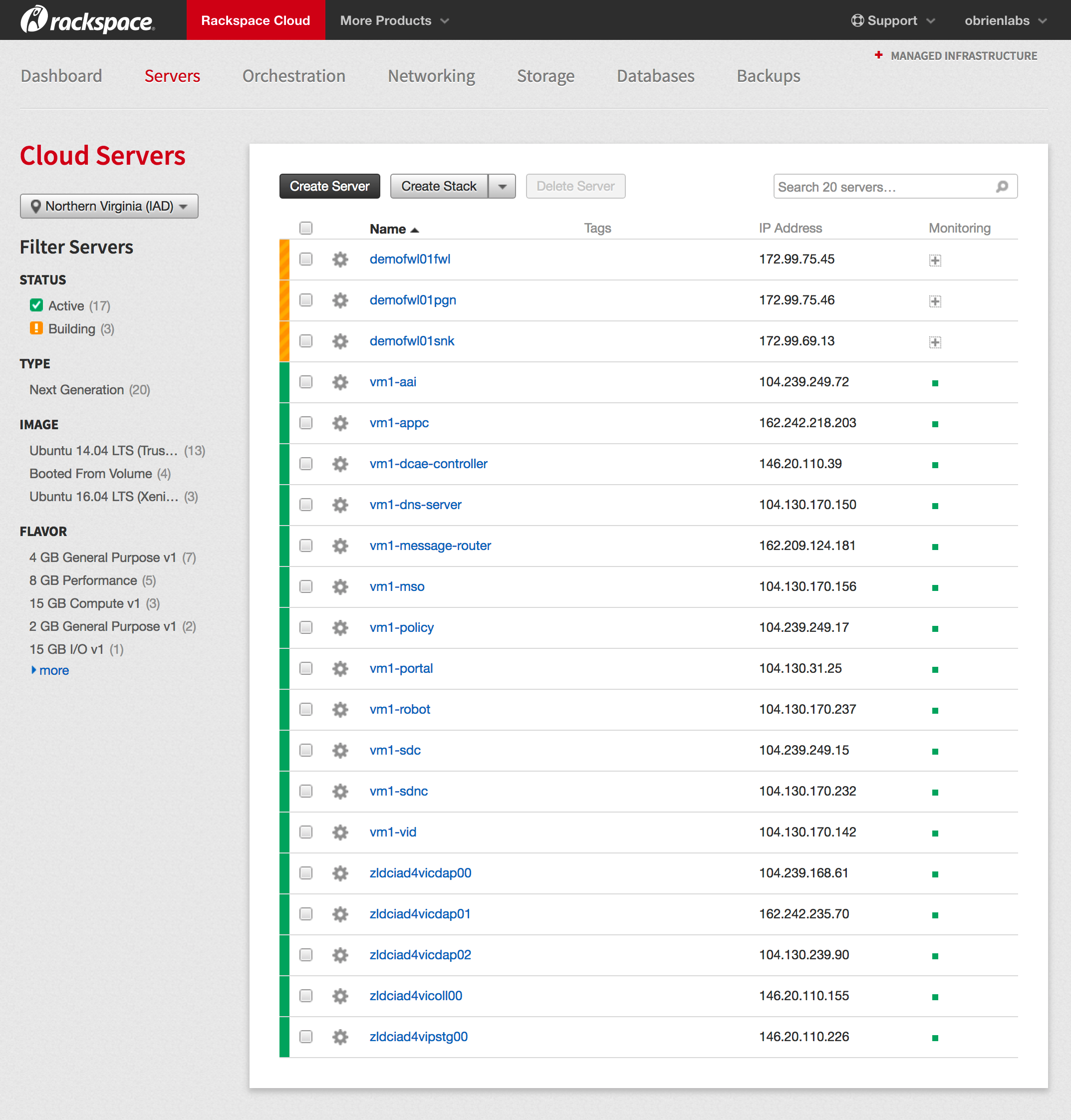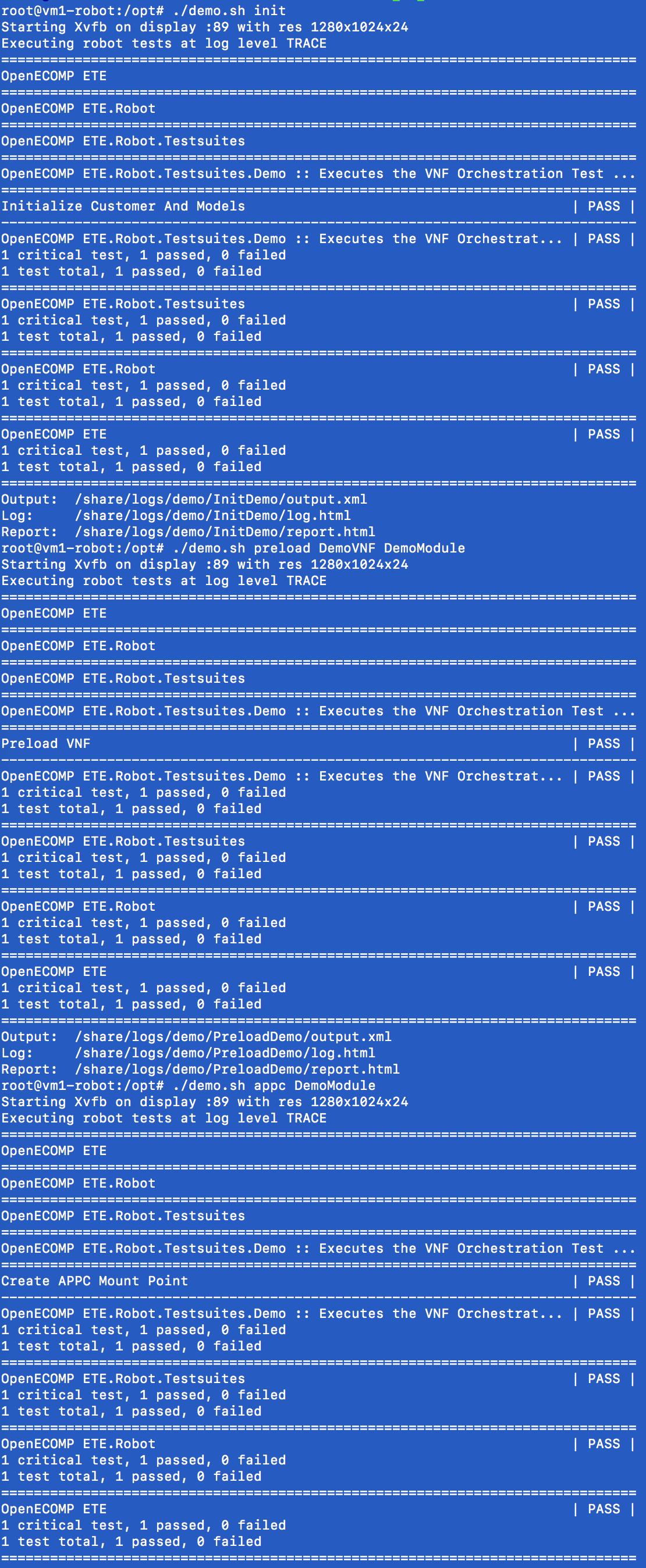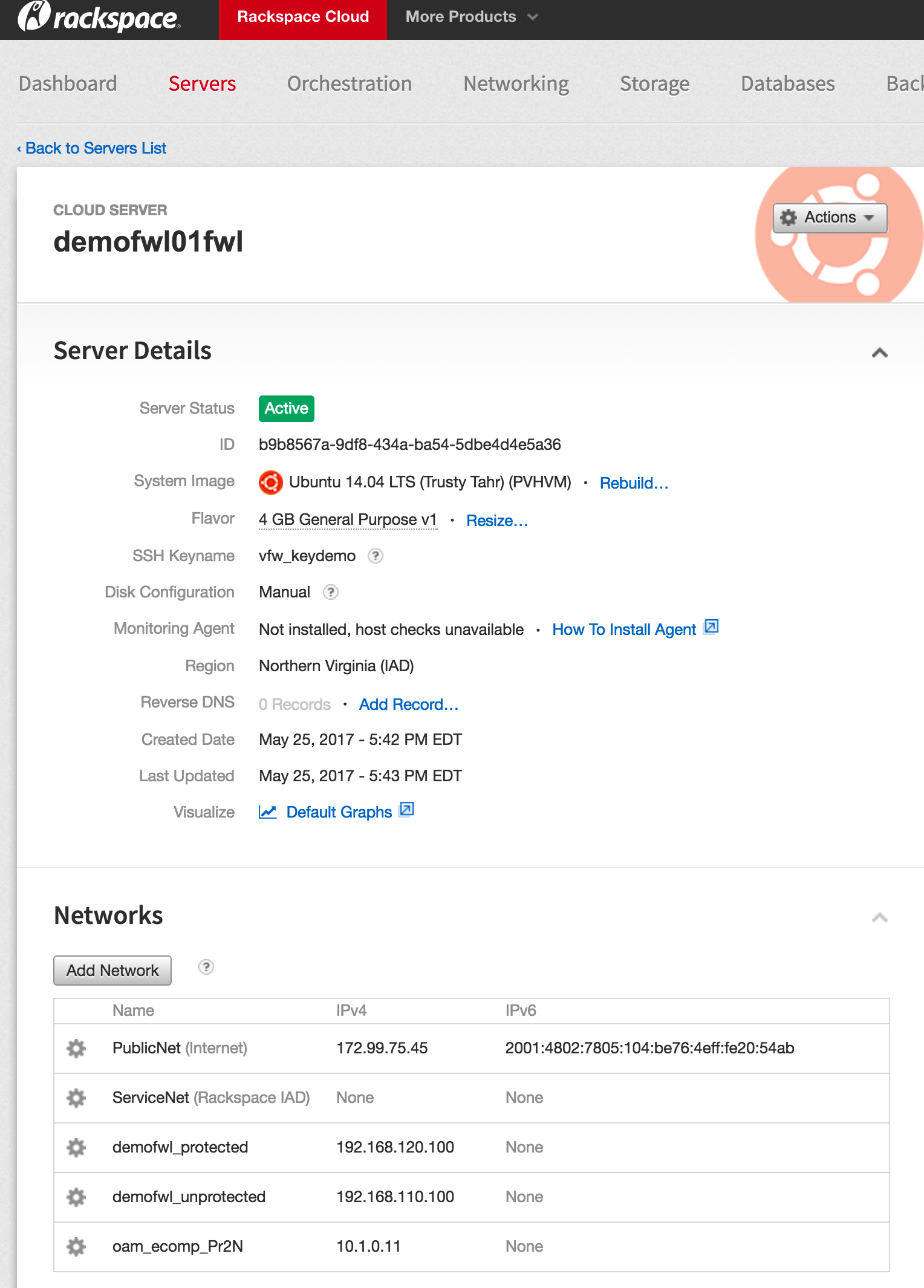| Table of Contents |
|---|
TODO:
20171120: Brian Freeman has commented on R1 changes - need to verify these in a live system before posting here
VNF preload is now part of VID in a checkbox - so we don't require the sdnc rest call as part of demo.sh preload
Robot in OOM is run in oom/kubernetes/robot now
Creating a Service Instance
In this tutorial we show how to take a service design that has been distributed and create a running instance of the service.
Notice the service you created in VID
| SDNC preload fragment |
|---|
"service-type": "11819dd6-6332-42bc-952c-1a19f8246663", above is the vf-module (3 of 3 in the diagram below) avove ios the vnf (2 of 3) |
| Gliffy Diagram | ||||
|---|---|---|---|---|
|
To simplify this we are going to use scripts (with some selenium robot scripts) to create the design, pre-load customer and network information, and orchestrate parts of the virtual firewall closed loop example. The following steps assume that you have completed and understand basic concepts from the setting up the platform and using the portal tutorials.
Let's start by finding the IP Address of vm1-robot in the Rackspace list of servers. Use this vm1-robot IP address, your Rackspace private key, and the PuTTY client to login to vm1-robot as root.
...
osx$ ssh-add onap_rsa osx$ ssh root@104.130.170.232 |
|---|
Run Robot demo.sh init
At the command prompt type
...
root@vm1-robot:/opt# docker ps CONTAINER ID IMAGE COMMAND CREATED STATUS PORTS NAMES f99954f00ab2 nexus3.onap.org:10001/openecomp/testsuite:1.0-STAGING-latest "lighttpd -D -f /e..." 19 hours ago Up 19 hours 0.0.0.0:88->88/tcp openecompete_container root@vm1-robot:/opt# docker exec -it openecompete_container bash root@f99954f00ab2:/# cat /share/logs/demo/InitDemo/ log.html output.xml report.html |
|---|
Deploy Service Instance in VID
From the ONAP portal, login to the VID application using demo user, browse to locate the demo SDC Service Models, and Deploy an instance of the service you created - not the pre-populated demoVFW.
(Note: deploy your "service" above - not demoVFW or demoVLB - these 2 are leftover pre-population artifacts of the init script and will be removed)
Use the generated demoVFW above (you don't need to onboard/distribute your own)
Fill in the information (Instance Name=DemoInstance, Demonstration, vFW) for a Service Instance as shown below and press Confirm.
adjust above for project and owning entity and vFWCL/vSNK
Wait for a response and close the window
...
You should now see a service instance displayed.
Add a Virtual Network Function under the Service Instance in VID
Add a VNF using the drop down button, complete, and enter the following information. The tenant and LCP region drop down choices may be different for your Rackspace account. Both IAD and DFW support heat templates - but currently only IAD is supported in this demo until
| Jira | ||||||
|---|---|---|---|---|---|---|
|
Wait for and close the response window.
Run Robot demo.sh preload of DemoModule
Return to the PuTTY/ssh window and type the command to load VNF configuration information
...
| Code Block |
|---|
/opt/eteshare/logs/demo/PreloadDemo/output.xml |
Preload Flow
see overall Tutorial: Verifying and Observing a deployed Service Instance#vFirewallFlow
demo.sh calls runTags.sh in the docker container in robot - which runs the robot test framework scripts starting with PreLoad VNF in demo.robot
Preload VNF
Preload User Model ${VNF_NAME} ${MODULE_NAME}
which calls demo_preload.robot (although it screen scrapes the Service ID previously from VID - in this call it does a rest call to VID to package up the vm modules list) and calls SDNC preload with these (the diagram needs a 25-2 for robot to VID as well for this sub-step)
Preload User Model
Login To VID GUI
${vf_modules}= Get Module Names from VID ${invariantUUID}
Preload Vnf ${service_instance_id} ${vnf_name} ${vnf_type} ${vf_module_name} ${vf_modules} ${service} demo
which calls sdngc_interface.robot (logs in and posts to sdnc/mobility/addVnfProfile)
Preload Vnf Profile
Login To SDNGC Admin GUI
Go To ${SDNGC_ADMIN_VNF_PROFILE_URL}
Click Button xpath=//button[@data-target='#add_vnf_profile']
Click Button xpath=//button[contains(.,'Submit')]
which calls the post form
<form name="addForm" role="form" action="/mobility/addVnfProfile" method="POST">
http://sdnc:8843/mobility/getVnfProfile
which runs a backend DB insert operation on SDNC (calling the DB directly here is likely not advised, also there is no parameter checking on the resultant SQL, we should also be using an ORM framework)
/sdnc-oam/admportal/mobility.jsrouter.post('/addVnfNetwork', csp.checkAuth, function(req,res){ |
|---|
Add a VF Module in VID
Option 1: REST call to MSO
POST to http://{{mso_ip}}:8080/ecomp/mso/infra/serviceInstances/v2/<id>/vnfs/<id>/vfModules - see UCA-20 OSS JAX-RS 2 Client
Option 2: VID GUI
Add a VF Module using the drop down button.
...
Fill in information for the VF module (service name = Service) and confirm.
Watch as the 3 VMs for the VF start to come up on Rackspace (dialog is still up)
Create VF Module - polling hangs - vFW VMs are created though
Eventually you will see a (red-herring) poll timeout - we need to adjust the wait time and # of retries here - anyway the 3 VM's are up (with pings but not necessarily with 200 health checks on the processes)
...
For now cancel the Create VF Module dialog (the VMs were created)
Watch VF VM stack creation
Watch as the 3 VMs for the VF start to come up on Rackspace (dialog is still up)
Note: Openstack users with RegionOne may see failures here. Looks into the below ticker to update MSO docker container /shared/mso-docker.json file with RegionOne settings. For logs use
| Panel |
|---|
| docker logs -f testlab_mso_1 |
Browse our new vFW service
Verify VNF Profile
create an account on SDNC http://sdnc-ip:8843/signup
login http://sdnc-ip:8843/login
Check VNF Profile in Profile menu
Wait for the response and close the window as was done in prior steps. The VF Module creation can also be viewed as a stack in Rackspace as shown below.
Run Robot demo.sh appc on DemoModule to mount the Traffic Generator
To complete the service instance we will run one more script that mounts the Traffic Generator on the Application Controller to enable policy driven configuration changes. Return to the PuTTY window, type the command and wait for the response as shown below.
./demo.sh appc DemoModule
To summarize: here are all 3 orchestration assistance runs (init, preload, appc) between interleaved Service, VNF and VF-Module UI actions - to summarize
see the vFW sink page on the snk VM - to view traffic generation stats
...
| Jira | ||||||
|---|---|---|---|---|---|---|
|
Control Loop Flows
The platform and virtual function interactions in the control loop are summarized here.
Tutorial: Verifying and Observing a deployed Service Instance#vFirewallFlow
Error Handling
Handle MSO Failure on RAM Quota exceeded
...
Also the private key for the 3 vFW VM's is in /testsuite/robot/assets/keys/robot_ssh_private_key.pvt
TODO: 20181023 during the Academic Conference : the SDNC preload checkbox does not actually run the preload robot script - - still need a manual preload via the rest call in Vetted vFirewall Demo - Full draft how-to for F2F and ReadTheDocs - it just tells SO to pull in data from SDNC
Install the vFWCL first because it has the network
to do repeated instantiations - adjust the network values in the preload-vnf-topology-operation rest call - being automated in casablanca - 92,96, put the right service-type (Service Instance ID - top right in the gui)


